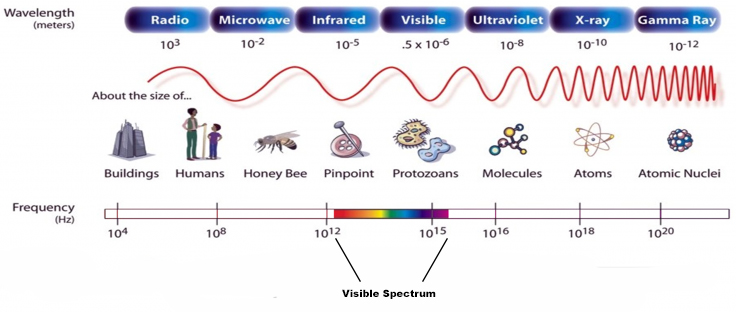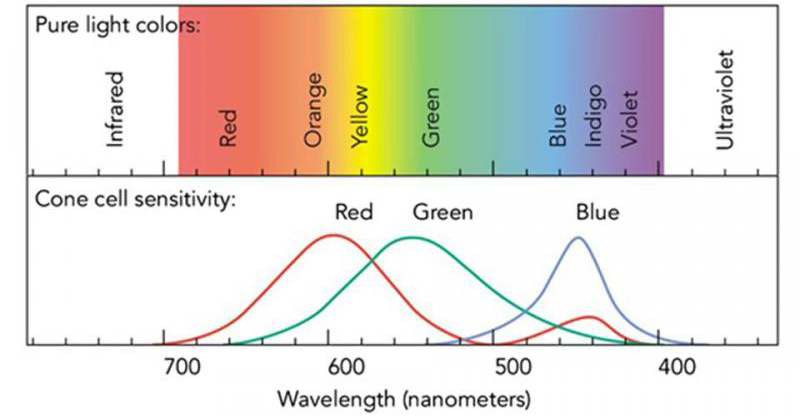In the summer of 2013, Smith Optics came out with a new kind of polarized lens tech called “ChromaPop” and they’ve been making some pretty bold claims about it.
In Smith’s own words:
“Quite simply, ChromaPop Lenses are the most advanced polarized lenses in the world… By blocking color wave intersections as they pass through the lens, ChromaPop is able to eliminate color confusion, so your brain is recognizing truer color, faster. ChromaPop optimizes color and increases clarity, enabling you to see the outside world with an unparalleled level of vibrancy.”
Smith seems to be saying that their ChromaPop lenses cut glare and improve clarity and definition (like traditional polarized lenses do), but that they also allow the wearer to see colors that are more vivid and saturated.
In some ways, this sounds like the product copy from most optics companies. Maui Jim, for example, says that their PolarizedPlus2 lenses “[boost] color via specially designed lens treatments. So your view is clearer, with crisper contrast and amazing brilliance.”
So are Smith’s claims about ChromaPop merely your standard marketing jargon, or is there something really here?
How could color be more true or optimized? What are “color wave intersections,” and does “color confusion” refer to a real-world occurrence? In other words, does ChromaPop actually do anything—create a real-world difference and improvement?
We’ve dug a little deeper to see if there is, in fact, some real science behind the lens technology. And of course, we wanted to find out for ourselves whether things look noticeably different / better through a pair of ChromapPop polarized lenses vs. Smith’s normal polarized ones?
In this Gear 101 piece, I’ll try to explain how I think ChromaPop is supposed to work with respect to the science underlying the technology, then relay my experience wearing some of Smith’s ChromaPop lenses.
First things first, we’ll need to talk more broadly about light, colors and how we perceive them.
Light, Color, and the Visible Spectrum
The light and the range of colors we see are all part of the “visible spectrum.” However, this visible spectrum is only a small section of a much broader spectrum of electromagnetic radiation that includes everything from low-frequency radio waves to high-frequency gamma rays.

We perceive a certain color when an object reflects light of a certain wavelength within the visible spectrum. Or, in other words, the object absorbs all other wavelengths of visible light except for that of the color we perceive.
For example, a red t-shirt reflects rays of light with a wavelength of ~700 – 650 nanometers, and absorbs all other wavelengths. Grass appears green because it reflects light with a wavelength of ~510 nanometers.

But Why Does a Red T-Shirt look Red?
Your eyes perceive colors/light through two types of special photoreceptor cells on your retinas (rods and cones) that convert the electromagnetic radiation within the visible spectrum into signals to your brain.
Rod cells are more active in dim light, so they’re less relevant to this discussion (unless you wear your sunglasses at night). Cone cells, however, are responsible for color vision and function best in relatively bright light.
There are three types of cone cells: Long (L), Medium (M), and Short (S), named for the colors (wavelengths) of light to which they are each most sensitive: red, green and blue, respectively. The picture below introduces cone cells and their sensitivity relative different colors of light. Keep in mind that this is a rough diagram that’s merely meant to provide a general visual aid.
When you see a red t-shirt, the ~ 650 nm wavelength of red light stimulates the L cone cells on your retinas, sending an impulse to your brain. Your M and S cone cells don’t react much at all in this case, so your brain knows that it’s received an impulse from a L cone cell, and the color you perceive is red. Of course, we’re able to see colors other than than blue, green, and red, and we perceive those other colors when multiple types of cone cells are stimulated to different degrees.
For example, when an object reflects light with a wavelength of ~ 600 nm, both your L and M cone cells are stimulated, but the L cells (sensitive to red light) react more intensely. Your brain then analyzes the ratio of L signals to M signals and you perceive the color we know as orange. With respect to the wavelengths associated with colors of light, orange is in between green and red on the visible spectrum, but is closer to red than green.
Ok, so then what’s all this business about color confusion?


Great job Jed, there’s some cool info here!
Wow so it makes colors even more accurate than reality itself. Amazing. uh.. or maybe not. Sure it will make colors more popped, but less nuanced too. reality has tings that are in-between red and green. So we’ll just mute those since they don’t fit with our color pop world? It’s like a cartoon filter.
VLT (*VERTICAL* light transmission) ?
This was just to check whether readers are sleeping or thei brains are working, isn´t it?
Now that these lenses are coming out in goggle form, would be great to have an update on how chromapop works in the snow and various weather conditions. Very interested in chromapop storm versus blue/yellow sensor for low visibility days.
Also worthy is a mythbusting debate on polarized versus non-polarized lenses for snow/ice begin. I’ve bought into the theory that you want to see the glare from various snow textures/ice. Urban legend perhaps?
So, you debugged Chromo-Pop? Not quite. How do they filter out the intermediate colors? Without discussing the technology it’s just Marketing, similar to Oakley Prizm. We just waved a wand over the lens and poof!
Dave,
Absorptive (using conjugated inorganic of organic compounds that absorb specific wavelengths) and dichroic (using multiple layers of materials with different refractive indices) optical filtration are both well-established technologies in optics that accomplish what Chromapop does, selectively filtering specific wavelengths. Smith (or Oakley, as far as I know) doesn’t go into the details of which one they use, so I can’t comment on their particular method.
Thanks,
Jed
I used the CP Storm and the Blue Sensor in two following days at the Stubaier gacier in Austria with similar conditions: clowdy, partly foggy, no real witheout though
In the end I cannot tell, that the one is appreciably better than the other.
The CP Storm gives a more red-dish impression, till eyes and brain get adjusted.
I also have the dark CP Sun (or how is it called), but I didn try it out yet.
any update on the sun vs everyday vs storm?
Trying to figure out if i’ll add a CP sun or Everyday to go with a blue sensor.
I agree with the guesses here at what ChromaPop really is, but it’s a little unfortunate Smith couldn’t weigh in on the actual science behind these lenses. There’s not much that will turn me off of a product faster than a bunch of marketing nonsense followed by no meaningful explanation what it *actually* does.
It’s really all there in the article, but long story short, it’s just a color filter. There are different types, but it’s well established technology used in lens manufacturing of all kinds. As described in the article, the filters in chromopop eliminate those specific wavelengths that are problematic for red/green color differentiation in sunglasses. It’s not all marketing, and it’s certainly not creating a cartoon effect as posited in another comment. It’s allowing the user to see colors more closely to how they’d appear to the naked eye, despite the overall light filtering effect inherent on sunglass design. Owning these, I can say it’s a pretty fantastic feature.
Question-Answer asked-answered by customer- Smith rep on the official Smith website:
Q: Is the chromapop photochromic rose flash lens polarized?
11/21/19
A: Hi Aleks! Thanks for your question – the ChromaPop Photochromic Rose Flash Lens is not a polarized lens, it instead is combing ChromaPop and Photochromic Technology. The ChromaPop lenses are optically
tuned for visual comfort, while Photochromic technology brings a light-adjusting inner layer to automatically change with your lighting. Hope this helps!
ALEKS—
Did you try the ChromaPop Photochromic Rose Flash lens??
If so what are your “thots.”
Thanks
RC
Hi Roberta,
While I recently purchased Smith goggles with ChromaPop I haven’t tried them out ‘live’ on the slopes just yet [can’t wait!] But my first impressions from trying them on is [that] the lens has an effect similar to polarized lenses, but clearer due to the lens having a lower vlt index than typical polarized sun glasses. Plus, it has a bit of a rose/yellow tint, which is easier on the eyes. It should be noted: these goggles are not polarized, contrary to some descriptions falsely claiming the chromapop being a form of polarization – it is an entirely different technology. Please see an official response from Smith representative to this effect posted above. Some glasses made by Smith do come with both, chromapop and polarized options, but I have not seen both technologies applied at the same time in a ski goggles form factor. This may be due to how polarization affects light braking by smoothing out the curves, which can be counterproductive on the slopes. I am however counting on the transitioning effect of the lens to make my life easier, it is hard sometimes to quickly adjust to changing light conditions such as sun/shadow and maintain the same speed and composure.
Thanks for the review. This is helpful. I’m not certain this will apply to me as I have a deuteranopia or red/green color deficiency. My issue is detecting ski slope variation in “gray” lighting such as on a cloudy day or when skiing in a snow squall. The light is flat and doesn’t provide a true contrast as when it is naturally lit with sun. The slope will appear flat when in fact there are bumps and falls present. I plan to try a pair anyway.